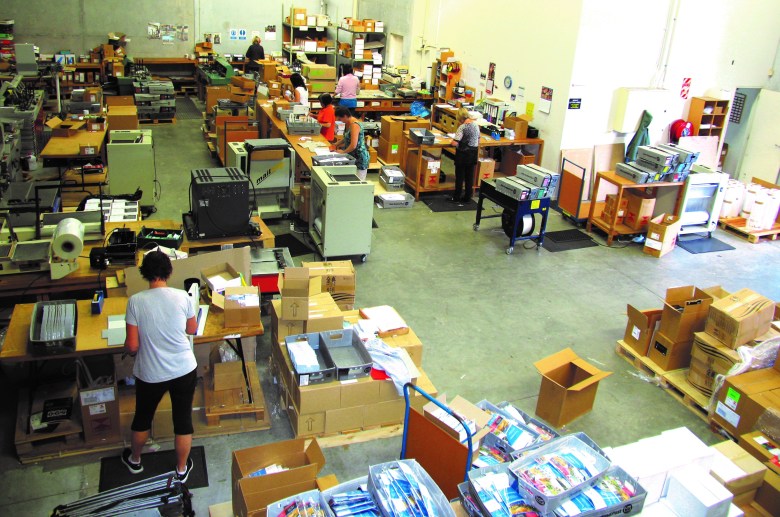
Looking for bright spots in the printing industry reveals a range of opportunities.
Direct Mail stands out as a sector that commercial printers can use to drive growth.
It includes any unsolicited advertising sent to prospective customers through the mail so you might think of advertising catalogues, brochures and circulars; promotional letters and coupon envelopes; printed promotional merchandising material; postcards and samples; and even pre-approved card applications. This form of direct marketing has increased its uptake of tailored offers and messages sent to targeted prospects.
Market demand has driven the growth of direct mailing. Despite a reluctance on the part of some consumers to receive targeted mail, the majority of consumers don’t mind it and even find it helpful. Targeting works for marketers as a necessary way of gaining a return on investment for their clients’ marketing dollars.
For targeted campaigns, marketing managers have successfully used the power of direct mail and combined it with digital media. This has seen the creation of sophisticated direct mail pieces that align with easy to access digital messages. For example, Fuji Xerox New Zealand has used personalised marketing for a number of its product launches, where it has combined print and digital in a number of successful campaigns – several of which have won international awards.
Commercial printers have a number of options in this sector. For one, they can simply do the printing for a mailing company, which will keep the presses rolling and produce some profit. Personalisation involves data preparation, data merging, composition, and digital colour printing and many print companies see that as a hassle better left to someone else.
However, for a larger margin, they can broaden their outlook and look at how they can use data at one end of the process and how they can make the most of the opportunity at the mailing end. While expanding more into this market presents new challenges, it will also produce more revenue. Mail houses and an increasing number of equipment suppliers possess invaluable knowledge and expertise in this area and can help in any number of ways.
Positive trends and negative trends
IN 2008, the GFC had a negative impact on mailing, mainly because of reduced marketing budgets. Aligned with that, digital marketers offered relatively cheaper options and print became less attractive to agencies and their clients. That strategy has had to evolve as marketers have found solely digital campaign less and less effective.
Overall, direct mail volume stopped shrinking about three years ago and has shown steady growth ever since, so most printers expect to see it improve further.
A number of print industry trends have worked in favour of commercial printers. Firstly, digital colour printing has improved sufficiently so much in quality that printers can offer personalised and customised printing options to agencies and marketers.
This doesn’t mean that commercial print shops will see their offset presses idle. Modern digital print engines work compatibly with offset presses to produce a range of printed mail products.
Over the past 20 years, commercial printing has witnessed a movement from high volume offset to digital and value-added services.
As quality improves, high-speed inkjet presses will become more popular but many print shops can stay in the mailing game with a mix of offset and digital.
Another trend, and not necessarily a positive one for smaller print companies, has seen a growth in consolidation through the print sector This has allowed companies to grow to a size where they can invest in data processing technology, and the people who run it, and mailing solutions. This is likely to continue in the short term.
Negative trends include price pressures; increase in postage costs; and the ongoing cost for investment in technology that companies need to make to remain competitive. However, print companies can offset some of these expenses by passing them on. Also, the consequences of ignoring investment in fresh technology and ideas don’t bear mentioning.
Another trend sees the composition direct mail evolving to include more letters and cards over catalogues and brochures. For print companies this means upsizing their finishing capabilities and suppliers have already moved in that direction to assist.
Research indicates that about half of the print companies in mature markets like New Zealand and Australia see multi-channel campaigns as a growing area and they look forward to either starting or
continuing to offer print services to integrated campaigns.
Some commercial printers have rebranded themselves as marketing services companies and this may take them in other directions. Some have already found their non-print business expanding faster than their print business but, significantly, no one has stopped investing in print and finishing equipment because the demand remains.
Comment below to have your say on this story.
If you have a news story or tip-off, get in touch at editorial@sprinter.com.au.
Sign up to the Sprinter newsletter
